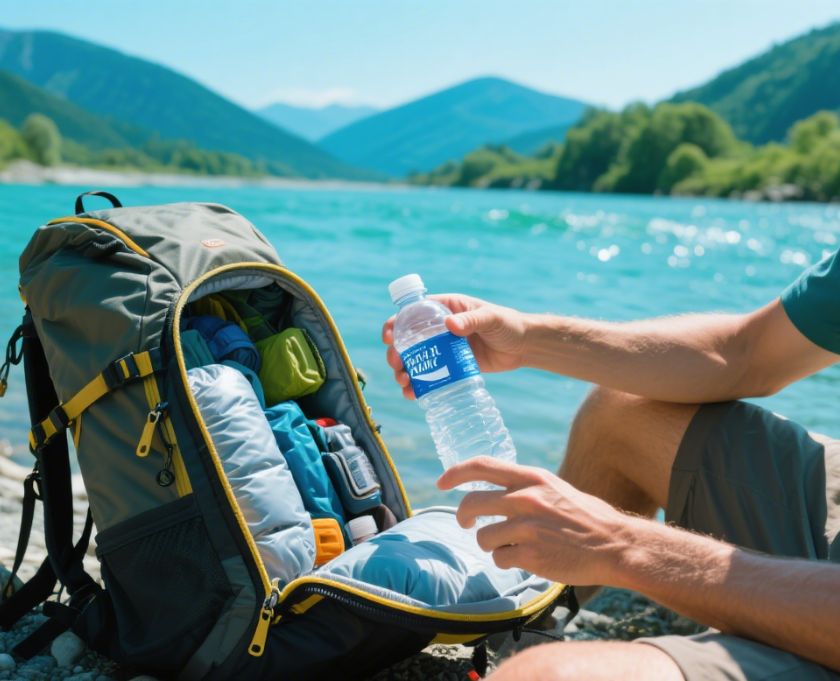Beautiful Plants For Your Interior

For thru-hikers and multi-day trekkers, every ounce matters and every liter counts. In this never-ending battle to pack light but smart, vacuum compression backpacks have emerged as a trendy solution. They claim to save space, tame gear chaos, and streamline packing. But are they actually a smart choice for long-distance hikers—or just another gadget better suited for urban travel?
In this article, we’ll examine the real-world pros and cons of using vacuum compression bags on the trail and explore whether they’re worth carrying over hundreds of miles.
What Exactly Is a Vacuum Compression Backpack?
Let’s clarify: this term refers not to a single product but to a packing strategy involving vacuum-sealable compression bags inside a backpack. These bags allow you to manually roll out air, creating flat, compressed bundles of clothing, sleeping bags, or other bulky gear.
Types hikers use include:
- Hand-roll vacuum bags (no pump needed—great for backcountry)
- Compression stuff sacks with valves or straps
- Backpacks with built-in compression compartments or zippers
It’s all about maximizing internal volume—on paper, at least.
What Seems Great About Compression Bags (On the Surface)
In theory, vacuum compression offers multiple perks for hikers:
- Reduces gear volume so you can fit more in a smaller pack
- Organizes clothing by day or purpose (e.g., base layers, sleepwear)
- Keeps items compact and flat, improving pack structure
- Can shrink puffy items like down jackets and sleeping bags
For short trips or base camp hikes, this all sounds like a win. But once you hit the trail for 5+ days, reality gets messier.
Why Compression Bags Might Not Work for Long-Distance Hikes
Long-distance hiking is all about adaptability, quick access, and moisture management. Vacuum compression systems can backfire in several ways:
| Concern | Why It’s a Problem |
|---|---|
| Trapped moisture inside bags | In humid or wet conditions, compressed clothes won’t dry and can develop odor or mold |
| Reduced breathability | Lack of airflow = condensation buildup inside the bag or backpack |
| Harder access on the trail | Need to unpack the entire bag just to grab socks or a T-shirt |
| Creates rigid “gear bricks” | Uneven weight distribution makes it harder to mold your pack to your back |
| Time-consuming repacking | Rolling and sealing bags takes time every morning and evening |
When Compression Bags Do Make Sense on the Trail
It’s not all bad news. With proper strategy, compression can be useful in specific scenarios:
- Compressing spare clothes you don’t need daily
- Stashing puffy gear like down jackets or sleeping bags
- Packing for hut-to-hut hikes with stable sleeping setups
- Separating clean/dirty gear during resupplies or town stops
- Organizing gear for two-person trips (e.g., shared packing system)
Bottom line: use selectively, not universally.
Trail-Tested Opinion: A PCT Hiker’s Experience
Lucy, a 28-year-old hiker who completed the 2,600-mile Pacific Crest Trail, started her trek using compression bags:
“They were neat for the first few days, but by week two, I dumped them. My clothes were always damp from rain or sweat. Compressing them made it worse. Plus, I hated digging through three bags just to find my headlamp at night.”
She switched to mesh stuff sacks and ditched the vacuum idea entirely—gaining access, breathability, and sanity.
Smart Alternatives to Full Compression for Long-Distance Hikers
If you love the idea of organized packing without the rigidity of compression, here are better trail-proven options:
- Half-compression bags: Leave some air in for breathability and flexibility
- Mesh pouches or ditty bags: Allow airflow and quick ID of contents
- Dry sacks with roll tops: Ideal for organizing while keeping gear weatherproof
- Zippered packing cubes: Good for town-to-trail transitions
These methods offer a sweet spot between structure and spontaneity.
FAQs
Can compression bags ruin gear in wet conditions?
Not ruin, but they can trap moisture, slowing drying and increasing odor. Not great in humid or rainy areas.
Do compression bags make your pack heavier?
Individually they’re light (~100g), but using multiple adds up. More concerning is their impact on usability.
What gear should I compress on a thru-hike?
Sleeping bags and insulated jackets—yes. Everyday trail clothes and food—no.
Can I use compression bags in bear canisters?
Yes, but soft-sided food storage fits better without rigid shapes. Be cautious.
Are compression bags better for base camping?
Absolutely. If you’re not repacking daily or trekking long distances, compression helps keep a static camp tidy.
Conclusion: Compress Strategically, Not Automatically
Vacuum compression backpacks sound appealing for hikers who value order and space-saving. But long-distance trails demand flexibility over formality. While compression has its place, overuse can cause more stress than it saves.
If you’re a thru-hiker or prepping for a multi-day trek, prioritize accessibility, ventilation, and packability over pure volume reduction. Use compression where it makes sense—and skip it when it doesn’t.
Hiking is already tough. Don’t let your packing system become your next obstacle.